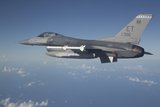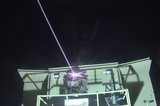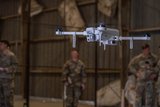Ireland to increase defence capital spending by more than half to $2 billion
LÉ James Joyce (top) and LÉ George Bernard Shaw are a key part of the Irish Navy’s fleet which may be boosted in an effort to increase subsea awareness. (Photo: Irish Defence Forces)
Ireland has announced an increase in defence capital expenditure for 2026-2030 from €1.1 billion (US$1.3 billion) to €1.7 billion, an increase of 55%, under funding unveiled in its National Development Plan released on 22 July.
Where the money will be spent will be outlined in the coming months but Ireland has previously noted a requirement for military radar, subsea awareness, force protection equipment, Defence Forces infrastructure and tactical uncrewed aerial systems. It also needs to fund preparatory work on possibly buying fighter aircraft and doubling the size of the naval fleet.
These planned procurements fall under Level of Ambition (LoA)
Already have an account? Log in
Want to keep reading this article?
More from Defence Notes
-
![NATO experiments with solutions to integrate networks, AI and uncrewed systems]()
NATO experiments with solutions to integrate networks, AI and uncrewed systems
During the latest edition of the NATO DiBaX, the alliance tested multiple capabilities to inform requirements for future efforts.
-
![Leonardo unveils plans for Michelangelo air defence dome]()
Leonardo unveils plans for Michelangelo air defence dome
The new multi-layered defence system will harness AI to neutralise airborne threats and protect Europe from Russian aggression.
-
![What will next-gen counter-UAS capabilities for the US look like?]()
What will next-gen counter-UAS capabilities for the US look like?
Future US counter-uncrewed aerial system solutions are likely to require a flexible, multi-layered approach to tackle a broad spectrum of new threats as they emerge.
-
![Elbit Systems awarded $2.3 billion contract as results soar]()
Elbit Systems awarded $2.3 billion contract as results soar
The company’s order backlog as of 30 September totalled $25.2 billion and more than a third of this is scheduled to be fulfilled before the end of 2026.
-
![US military foresees growing use of 3D printing]()
US military foresees growing use of 3D printing
Advanced manufacturing has evolved to meet military requirements and now supports multiple US critical assets, including Arleigh Burke-class destroyers, F-18, F-22, F-35, Bradley, HMMWV and Patriot.

























